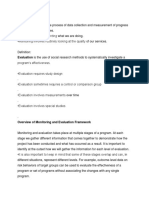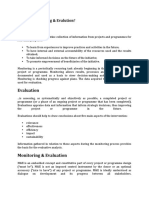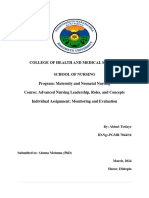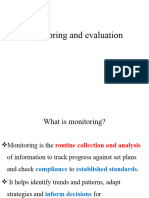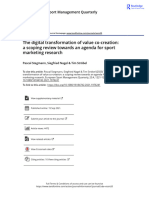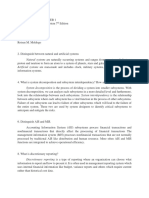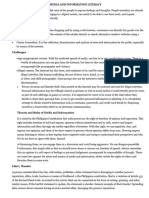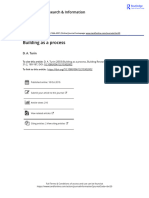0% found this document useful (0 votes)
31 views6 pagesAssignment Monitoring and Evaluation
The document discusses the importance of monitoring and evaluation (M&E) in ensuring planned results, improving management, and fostering accountability. It differentiates between monitoring, which is an ongoing process of data collection and tracking progress, and evaluation, which is a periodic assessment of program effectiveness. Additionally, it outlines the components of M&E plans, types of monitoring frameworks, and the significance of vision statements in organizational goals.
Uploaded by
shadiaa365Copyright
© © All Rights Reserved
We take content rights seriously. If you suspect this is your content, claim it here.
Available Formats
Download as DOCX, PDF, TXT or read online on Scribd
0% found this document useful (0 votes)
31 views6 pagesAssignment Monitoring and Evaluation
The document discusses the importance of monitoring and evaluation (M&E) in ensuring planned results, improving management, and fostering accountability. It differentiates between monitoring, which is an ongoing process of data collection and tracking progress, and evaluation, which is a periodic assessment of program effectiveness. Additionally, it outlines the components of M&E plans, types of monitoring frameworks, and the significance of vision statements in organizational goals.
Uploaded by
shadiaa365Copyright
© © All Rights Reserved
We take content rights seriously. If you suspect this is your content, claim it here.
Available Formats
Download as DOCX, PDF, TXT or read online on Scribd
/ 6


